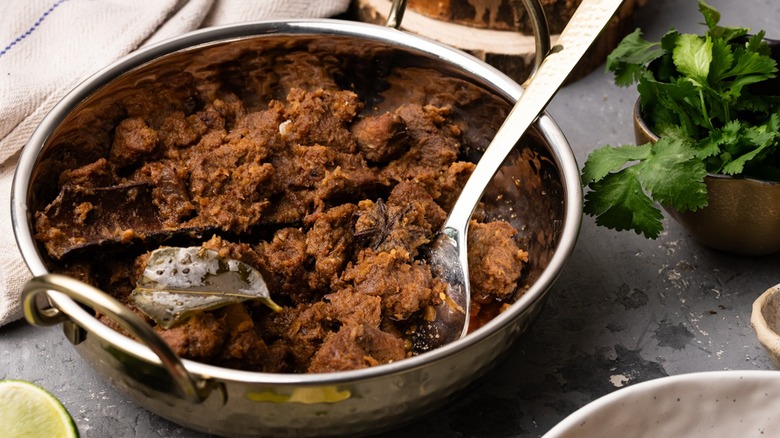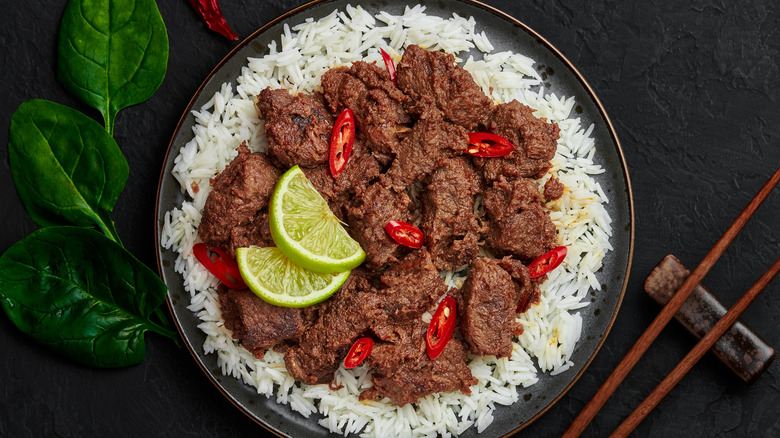Use Chuck Steak In Beef Rendang For The Most Tender Bites Of Meat
When you hear the word curry, there are a hundred different dishes that can come to mind. But if you live on the Indonesian island of Sumatra you probably think of rendang. This curry dish brings together coconut, spices, and beef for a savory, comforting, warming dish perfect for the colder months. Tasting Table recipe developer Jennine Rye's super tender beef rendang recipe takes chuck steak and cooks it down till it has a melt-in-your-mouth texture. Chuck steak comes from the chuck primal, which is from the shoulder section of the cow. This area of the animal contains tough muscles as well as tender, fatty parts, and requires slow cooking for the best results.
Something unique about Rye's recipe is that she does not braise the meat before cooking it in the spices and liquid. "Unlike other meat-based dishes, this rendang doesn't rely on browning the meat first to add flavor. Due to the type of beef and the amount of time it is cooked, it imparts loads of wonderful flavor to the dish by itself," explains Rye. The meat in this dish is cooked for at least two hours, to allow the chuck steak time to cook down into a soft, delectable texture.
Rendang is cooked low and slow
For Jennine Rye's recipe, the sign that the rendang has completed cooking is when most of the cooking liquid has evaporated and there is very little liquid left in the pan. Rye calls for it to be cooked at a low simmer. For recipes that require a long cook time, a good phrase to remember is to keep it low and slow. Low refers to the cooking temperature, and slow refers to cooking the food for longer. This allows not only for the beef to become truly tender but for the flavors to develop as well.
When you cook down meat that contains higher amounts of muscle, such as chuck steak, you dissolve the collagen in the meat into gelatin. This allows the meat to separate more easily, resulting in the tenderization process of braising. Slow and low cooking also aids in moisture retention for the meat, despite the surrounding liquids being cooked off. Moisture retention is amplified in this cooking method because the even temperature distribution allows for better moisture retention. The final result is savory, juicy, flavor-packed, and tender beef rendang.

